![clip_image002[22] clip_image002[22]](https://sunilsebastian.com/wp-content/uploads/2009/03/clip-image00222-thumb.jpg) After writing the tasklist thing, I sat down to brainstorm my life and realized that the brilliant idea I’d had, of sharing my process, came into direct conflict with my rather critical need to respect a few confidentiality agreements. So I’ve been waiting for a task that wasn’t covered by non-disclosure agreements and I think I found one today.
After writing the tasklist thing, I sat down to brainstorm my life and realized that the brilliant idea I’d had, of sharing my process, came into direct conflict with my rather critical need to respect a few confidentiality agreements. So I’ve been waiting for a task that wasn’t covered by non-disclosure agreements and I think I found one today.
Having essentially taken my project through the birth and delivery process, I’ve been asked to drop the kid off at the nursery. Which is to say, I’ve been asked to hand off my work to the operations team, with the idea that this would tend free me up to work on the next thing.
So now I have to figure out what transitioning means. And to do that, I need to figure out what I need to do.
A Brainstorm over a green field
When I know something about a problem, I use my knowledge as my starting point. When I know nothing about a problem, I use my imagination. Specifically, I brainstorm.
There are a few different techniques for brainstorming, but they all boil down to thinking exercises with a common set of rules:
- Capture Everything – If you don’t write the ideas down, they are easily forgotten, easily ignored, easily lost. If you do write them down, then you have these thoughts all sitting together, and then the magic happens because you’re pushing your thinking through more parts of your brain.
- Don’t judge – This is meant to be a stream of consciousness. It means that it’s okay to include the dumb ideas, and the ones that make you laugh, and the ones that make you cry, and the thought about what you’re going to have for lunch.
- Don’t organize – We are taught to structure what we produce from a very early age. But the effort to impose order can be stifling. Though I’ve found that I don’t follow this rule very much.
- Don’t laugh – Brainstorming, particularly in a group setting, can be a nervewracking exercise. People need to impress coworkers and bosses and subordinates. And that impulse to worry about appearances will compromise the result of the exercise.
Making a Map
I like to capture my brainstorming as a mind-map which I create using a brilliant free tool called FreeMind. It’s not the only software, or even the only free option, and frankly you can work on a whiteboard too so let’s focus on the process.
And the process starts with putting the main thought in the middle.  For me, it’s a project transition plan. So I label that center blob.
In order for me to ask my colleague to take over this application, I need to tell him things about the application. So I start thinking about things I need to talk about and as I’m thinking, I’m writing them down.
As I said before, the goal is to just dump thoughts out, as fast as I can. But usually within a few items of starting, I’m already mixing different types of things. And there are a couple of ways of handling this.
The theory says that I shouldn’t stop to organize at this point, but for me, I find that I struggle with keeping track of what things mean. There are many ways to solve the problem, like using icons or colors, or to just use longer, more detailed labels.
But to me, all of that is a lot of frills when the software gives me the ability to work magic. I can just use my mouse and start grabbing things and arranging it.
Suddenly, I’ve gone from a one-dimensional list to a structure. And the structure shows me things about the things I’ve already listed, and it also gives me new things to add to my brainstorming which results in more ideas to capture
If I don’t know where to put something, I throw it on the bottom of the list. If I do see something that provokes a thought, I just add the idea where I think it needs to go.
At this point in the exercise, it feels like a snowball growing as it rolls down hill. Everything is an option. I can change labels, move things around, reorganize them.
Until finally I have a roadmap. See the picture below? That’s the table of contents for three documents and a meeting.
And the funny thing is that the whole exercise took maybe 10 minutes, and that mostly because I kept stopping to take screenshots.
Now I know what I need to do, and I know how I’m going to do it. From here, I can make checklists or just report to my boss if he asks questions, but regardless, this problem is effectively under control.
This is one way of doing things. For me, I find colors and icons to be useful only if used sparingly, and so for the most part, when I produce a mind map for myself, it’s a very spartan thing.
But my subarctic-friend Moon’sLark considers the colors and icons a very important part of diagramming so just as an example, I took my crisp and functional mind map and added some color to highlight a section. And I added a connecting arrow to show what happens when you have related ideas that have a reason to be spaced apart.
All of this through the magic of software. The biggest feature, to my eyes, is the fact that I can collapse and expand chunks so that I can concentrate on different pieces.
Some Tips to Take Away
That’s my mind map for my current mission. As I said, I’ll be taking this tomorrow and using it to churn out the skeleton of my documentation for tomorrow.
It’s also the n-billion-and-oneth mind map that I’ve built, so I’ve gotten rather practiced at how to handle them and how to organize them. When you’re starting out, they can be intimidating and confusing.
So here’s a few tips to reward you for reading this far:
- It’s hard to make up scenarios where this would be useful. Believe me I tried. Wait till you need to figure out what you know about something, and give this a try.
- I rarely *finish* the mapping process. By the time I’ve gotten halfway through, I usually have enough of the picture to see the story, and then I can do my work from the story
- As much as possible, try to avoid decorating, coloring and sorting while you are starting out. It’s too easy to waste time decorating instead of developing
- As with most things, it gets easier with repetition. Or at least the tools get out of the way.
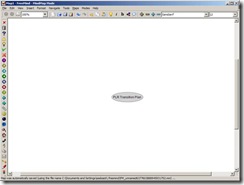
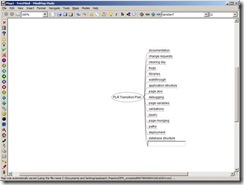
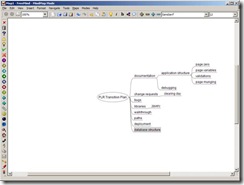

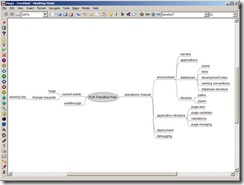
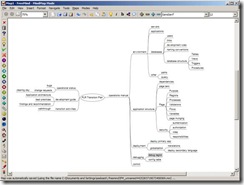
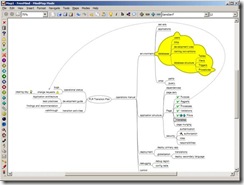



I do NOT live in the arctic… no matter what the weather would have you believe. In fact I live in the most dangerous city in the country WITH the strongest economy…
And the most horrible weather…
And I LIKE simple mind maps. I just can’t ifgure out how you get more than one picture into the post!